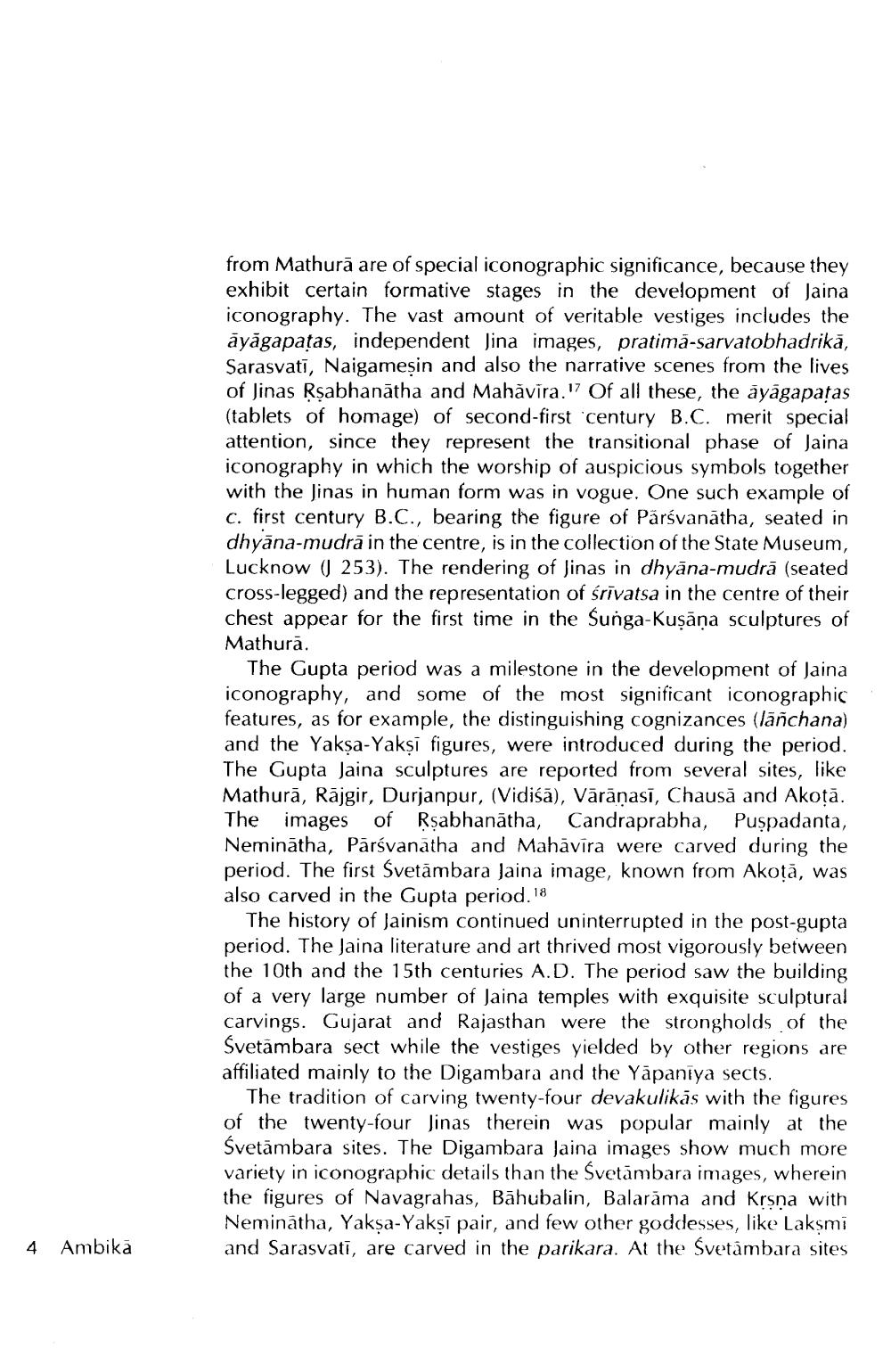________________
from Mathurā are of special iconographic significance, because they exhibit certain formative stages in the development of Jaina iconography. The vast amount of veritable vestiges includes the āyāgapatas, independent Jina images, pratima-sarvatobhadrikā, Sarasvati, Naigameşin and also the narrative scenes from the lives of Jinas Rsabhanātha and Mahavira." Of all these, the āyāgapatas (tablets of homage) of second-first century B.C. merit special attention, since they represent the transitional phase of Jaina iconography in which the worship of auspicious symbols together with the Jinas in human form was in vogue. One such example of C. first century B.C., bearing the figure of Pärsvanātha, seated in dhyāna-mudra in the centre, is in the collection of the State Museum, Lucknow () 253). The rendering of Jinas in dhyāna-mudrā (seated cross-legged) and the representation of śrīvatsa in the centre of their chest appear for the first time in the Sunga-Kuşāņa sculptures of Mathurā.
The Gupta period was a milestone in the development of Jaina iconography, and some of the most significant iconographic features, as for example, the distinguishing cognizances (lāñchana) and the Yaksa-Yaksi figures, were introduced during the period. The Gupta Jaina sculptures are reported from several sites, like Mathurā, Rājgir, Durjanpur, (Vidiśā), Vārānasi, Chausā and Akotā. The images of Rşabhanātha, Candraprabha, Puspadanta, Neminātha, Pārsvanatha and Mahavira were carved during the period. The first Svetāmbara Jaina image, known from Akotā, was also carved in the Gupta period. 18
The history of Jainism continued uninterrupted in the post-gupta period. The Jaina literature and art thrived most vigorously between the 10th and the 15th centuries A.D. The period saw the building of a very large number of Jaina temples with exquisite sculptural carvings. Gujarat and Rajasthan were the strongholds of the Svetambara sect while the vestiges yielded by other regions are affiliated mainly to the Digambara and the Yāpaniya sects.
The tradition of carving twenty-four devakulikās with the figures of the twenty-four Jinas therein was popular mainly at the Śvetāmbara sites. The Digambara Jaina images show much more variety in iconographic details than the Svetāmbara images, wherein the figures of Navagrahas, Bahubalin, Balarama and Krsna with Neminátha, Yakşa-Yaksi pair, and few other goddesses, like Laksmi and Sarasvati, are carved in the parikara. At the Svetambara sites
4 Ambika




